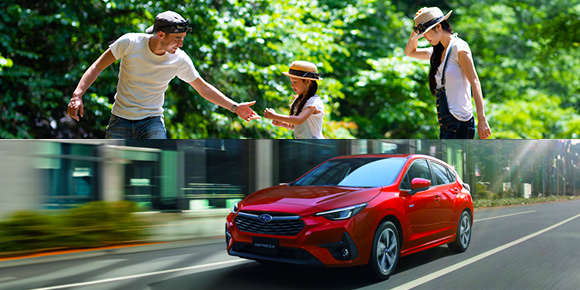SUBARU Group’s Six Priority Areas for CSR: People-oriented Car Culture
Basic Concepts, KPIs, and Relevant SDGs
| Basic Concepts | KPIs | Relevant SDGs |
|---|---|---|
| SUBARU believes that a car is more than just a means of transport. SUBARU will foster a sustainable mobility culture by providing customers with added value in the form of products and services which make the car a partner that enriches people’s lives and minds, while cherishing the human emotions of “Enjoyment and Peace of Mind.” |
|
 |
Why It Is Important to Us
The SUBARU Group has contributed to increasing customers’ options by respecting people’s diverse values and offering distinctive products tailored to diverse forms of market value.
We believe that a car is more than just a means of transport, but rather a partner that enriches people’s lives by understanding and meeting their expectations.
“Delivering Happiness to All”
Continuing to cherish the human emotions of “Enjoyment and Peace of Mind” experienced by each and every one of our customers, the SUBARU Group will develop and popularize a car culture that gives people the starring role by linking cars to changes in people’s lifestyles and life stages.
Activities in the Six Priority Areas for CSR
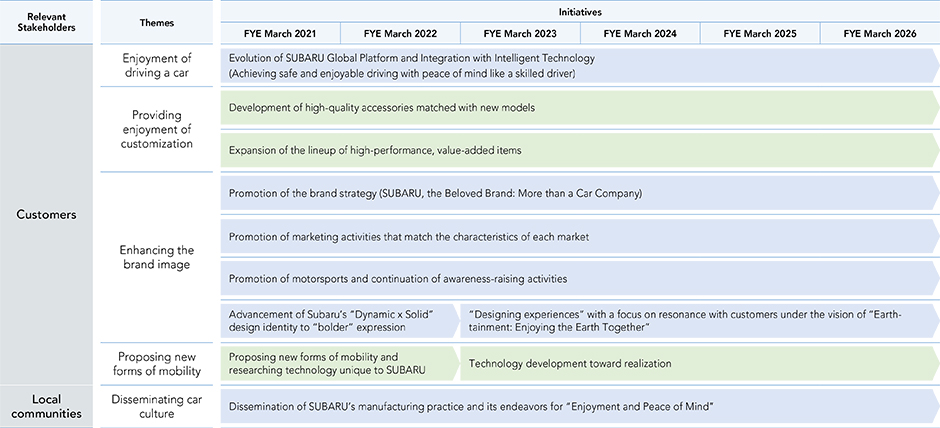
TOPICS
To continue providing enjoyment and peace of mind
Further enhancing the SUBARU Difference
The pleasure of driving: A dedication to driving dynamics
SUBARU’s universal philosophy of consistently prioritizing user needs
One of the most important elements that SUBARU pursues in vehicle manufacturing is driving dynamics. Driving dynamics refer to the pleasure of driving that people feel from aspects such as steering, pedals, and the vehicle’s movement. Traditionally, driving dynamics have focused on sensory perception, making performance difficult to quantify. The SUBARU Global Platform has changed that.
The SUBARU Global Platform, the car body design philosophy SUBARU launched with the Impreza in 2016, focuses on human sensibilities. Our indices include driving quality, low noise, and rigidity and vibration reduction. We have introduced advanced technologies and measuring tools to quantitatively assess factors such as torsional rigidity, flexural rigidity, and external noise, which significantly impact driving dynamics, and conducted precise analyses. One significant achievement has been the discovery that the speed and accuracy of a vehicle’s response from human input to initiation of vehicle movement is one of the factors that determine driving dynamics. Using the insights gained from these analyses, SUBARU has revamped the basic structure of its vehicles, giving rise to the SUBARU Global Platform. We increased the rigidity of various parts of the car body and the chassis, enhancing response time to the driver’s operations. In addition, by optimizing the frame structure and reinforcing various component connections, we reduced uncomfortable vibrations and noise. We also enhanced the precision of the points connecting the suspension to the car body, achieving a comfortable ride quality that minimizes the sensation of road irregularities.
There is no end to our quest to create cars that serve as a partner that enriches people’s lives and minds and our pursuit of unique value. To understand what brings comfort and discomfort to people, we collaborated with a university's medical faculty to delve deeply into the human body's structure and skeletal framework during vehicle development.
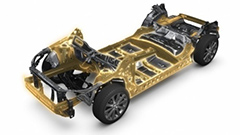
Technology born from a medical approach
Front seats/Quiet interior/Electric power steering
One of the themes we addressed in this collaborative research was the factors contributing to driver fatigue and motion sickness. The vibrations generated by acceleration and deceleration during travel, as well as the road conditions, are initially transmitted to the seats and then to the bodies of the vehicle occupants. Within the inner ear of humans lies the vestibular system, responsible for perceiving the body's sense of balance and acceleration. When this system is disrupted, it can lead to discomfort. As a result of more detailed analysis of head movement, it was determined that lateral oscillations, specifically the lateral rolling motion occurring when driving on uneven roads, have a particularly adverse impact on the human body. Due to the vehicle's rolling motion, the head and chest of a person move in opposite directions. In an attempt to counteract this unnatural motion, we unconsciously exert force on our lower back, upper back, and neck muscles, leading to driver fatigue and discomfort. In response to this challenge, our collaborative research based on human body structure revealed that the sacrum, which connects the pelvis and spine, plays a significant role in how the vehicle's motion transmits to the head. Taking this fact into account, SUBARU developed new seats that support the sacrum and stabilize the pelvis. As a result, we have successfully reduced head shaking by over 40% compared to conventional seats.
The second research theme concerned the sound of specific frequency bands that people unconsciously perceive inside the vehicle while driving. The results of the experiments revealed that this sound, distinct from regular noise and vibrations, was decreasing ride comfort. As we continued our investigation, we discovered that this sound within the frequency band was originating from the roof. The resonance of the roof was one of the factors inhibiting ride comfort. To mitigate roof resonance, SUBARU adopted a high-damping mastic (elastic adhesive). This helps reduce interior noise more quickly, minimizing discomfort and achieving a more comfortable ride.
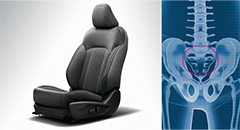
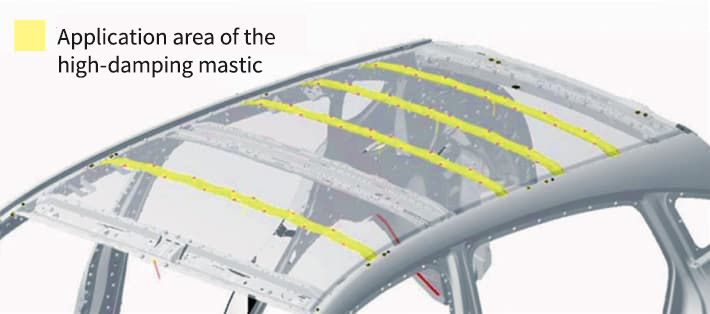
Our efforts to enhance the driving dynamics of SUBARU in pursuit of enjoyment and peace of mind extend beyond what we have introduced. At SUBARU, we are working to decode the enjoyment that people associate with cars using approaches related to medicine and mind-body science. We aim to apply this understanding to vehicle control technology, improvements in equipment and interior spaces, and the development of next-generation technologies. Moreover, we plan to further develop our unique industry-academia collaboration platform with a focus on the sensory experience associated with vehicles.
As another approach to significantly enhancing driving dynamics, we focused on improving steering feel. Specifically, we developed Electric Power Steering (EPS) that separates the driver's steering input axis from the motor assist axis. Unlike two-pinion EPS used in two existing models, we achieved a sporty, high-quality steering feel with minimal response delay by incorporating new control logic.
The new seat was created through collaborative research with a university's medical faculty. The high-damping mastic demonstrates exceptional roof vibration damping properties. Meanwhile, the two-pinion EPS enhances steering feel. At SUBARU, we have incorporated these advanced technologies and features into the compact crossover SUV, Crosstrek, which was launched in December 2022, and the new Impreza, which officially went on sale in April 2023.
We aim to eliminate discomfort generated during car travel at its source, and to create vehicles where not only the driver but all passengers feel comfortable. We will continue to provide customer with unique added value based on the SUBARU Difference from the perspective of driving dynamics.


